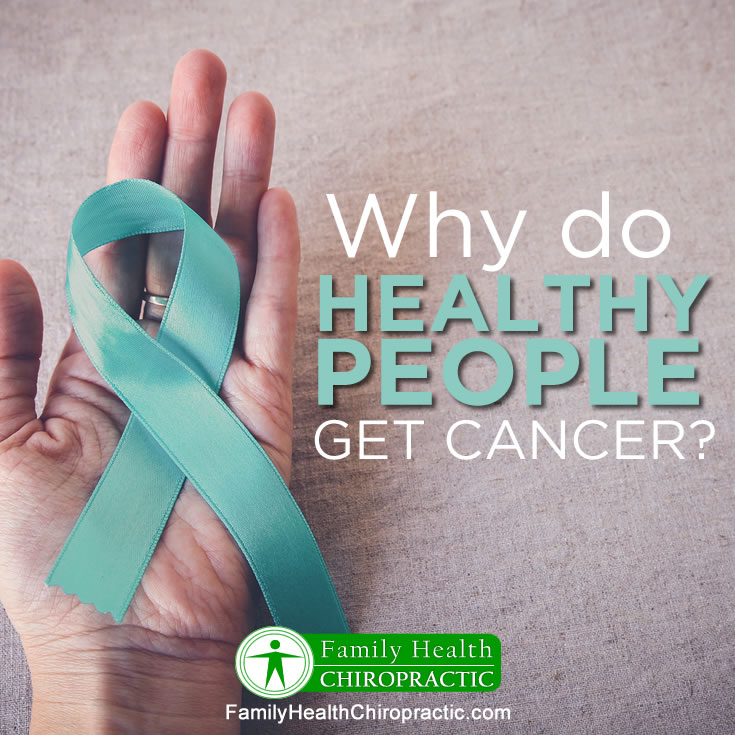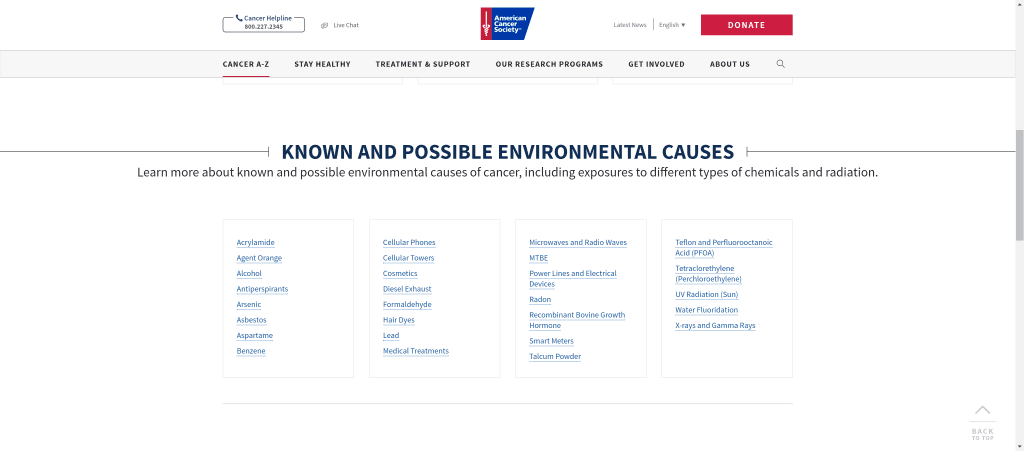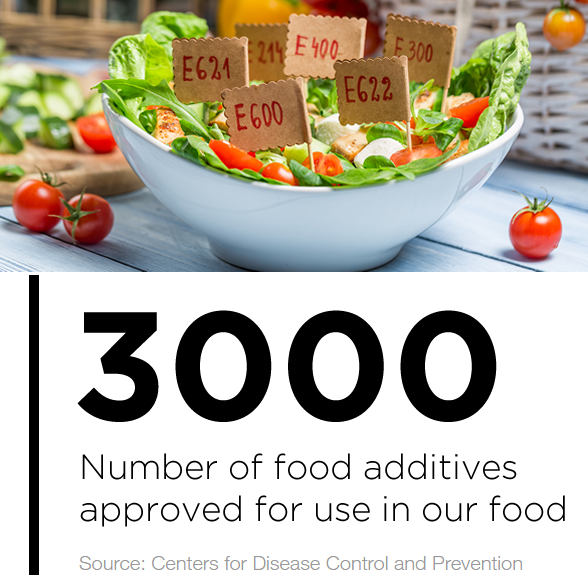I know, you know someone who has succumbed to the devastation of heart disease or cancer. I also know that many of those people were considered Healthy.
You know what I'm talking about…
Someone you know gets a cancer diagnosis and your first thought is “How can that be? They're so healthy?”
How could this person who eats healthy, exercises all the time and does all the things that healthy people are supposed to do get cancer?
It's unfortunate, but yes… people who live extremely healthy lifestyles; exercise regularly, maintain a balanced diet and have no obvious addictions can get cancer. But Why?
Well, for starters, it’s not just tobacco or drinking alcohol; we have tons of other carcinogens which have unfortunately become part of our daily exposure. From food to personal cosmetic products, the plastic keys on the keyboard I'm using to type this very article and the radiation i'm exposed to from the screen i'm looking at, to the power-lines that power my computer and the wifi signals that connect me to the internet – it's all unnatural and in some way changing my DNA.
It really is all too complicated to cover in a single article, so let's discuss the big ones: Pesticides, Preservatives, Food Additives, Greening Agents and Biotoxins or Infections.
Did you know that a large percentage of US food exports are rejected by other countries?
In the United States, up to 70 percent of prepared foods contain genetically modified ingredients. Not only will the European Union not accept them, but a ban specifically put on GMO foods has effectively forced starving nations to reject food aid. This means that even nations experiencing ongoing famine and starvation turn down thousands of tons of food – or as many reports put it – food product (not real food).
Other reasons for food export rejections include – mycotoxins, microbial contamination, veterinary drug residues, heavy metals, unauthorized food additives, product composition and pesticide residues.
And herein lies the problem. Even though someone can consider themselves to be a “healthy eater”, they are unknowingly loading themselves up with all sorts of cancer causing compounds.
Here’s a snapshot of just some of the known and possible environmental causes of cancer (taken directly from the American Cancer Society)
The Status of Food Quality
Let me start by saying that “DIET” and “NUTRITION” are two different things. In other words, your diet doesn’t mean you’re getting nutrients.
In the US, we are the most overfed country in the entire world, yet we are also at the same time, malnourished.
In 2015, a report on government dietary guidelines concluded that high levels of fruit and vegetable consumption are strongly or moderately associated with decreased risks of chronic diseases such as heart disease, high blood pressure, type 2 diabetes, obesity and cancer. The report also cites emerging evidence that suggests that dietary patterns with high fruit and vegetable consumption may decrease the likelihood of congenital anomalies as well as neurological and psychological diseases.
Look, the best cure for cancer lies in prevention and eating enough fruits and vegetables is hands down the best prevention we've got.
Unfortunately, Americans eat far too few fruits and vegetables. In fact, 80 percent of Americans fail to consume the daily recommended number of servings of fruit (1.5 to 2.5 cups for adults), and 90 percent fail to meet the daily recommended number of servings of vegetables (2 to 3.5 cups for adults). That means we are not even close to what some studies suggest may be the ideal number of servings of fruits and vegetables per day: 7 or more.
But when we do go for whole fruits and vegetables- are they even clean? A growing concern among consumers is whether or not pesticides in our food are safe? How harmful are these compounds?
The short answer is, “We don’t know.”
Are Pesticides Safe?
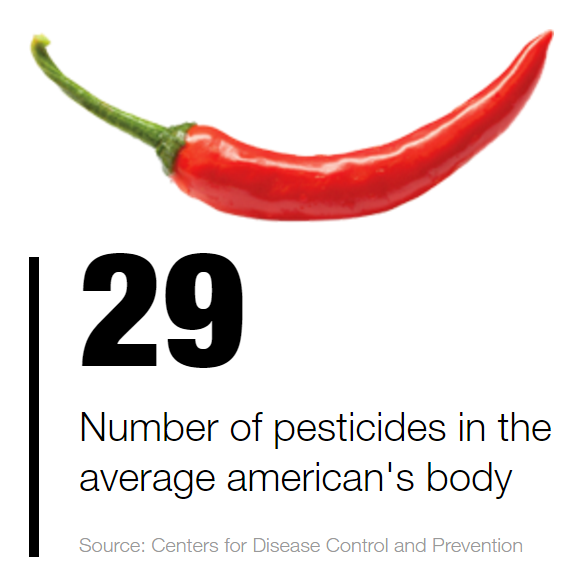
A few facts:
- Of the 80,000 pesticides and other chemicals in use today, 10 percent are recognized as carcinogens.
- Cancer-related deaths in the United States increased from 331,000 in 1970 to over 600,000 in 2016, with as estimated 30,000 deaths attributed to chemical exposure.
- We know that farmers are prone to certain cancers, including stomach, prostate, and brain cancer, non-Hodgkin's lymphoma, and leukemia. The National Cancer Institute (NCI) has linked the common weed killer 2,4-D to non-Hodgkin's lymphoma in several studies.
- Another NCI study found a link between breast cancer in women and elevated levels of DDE, a metabolite of the pesticide DDT, in their fat tissue. Women with the highest levels of exposure to DDT had four times the breast cancer risk of women with the least exposure. The link is not proven yet.
- Research also indicates that youngsters in homes where household and garden pesticides are used are seven times as likely to develop childhood leukemia. There still are unexplained clusters of cancer among farm-workers' offspring.
- A recent study of pesticides and childhood brain cancers has revealed a strong relationship between brain cancers and compounds used to kill fleas and ticks. The specific chemicals associated with children's brain cancers were pyrethrins and pyrethroids (which are synthetic pyrethrins, such as permethrin, tetramethrin, allethrin, resmethrin, and envalerate), and chlorpyrifos.
Since the industrial revolution, chemical-based pesticides have been used extensively in crop production.
Glyphosate, the active ingredient in Monsanto’s Roundup herbicide, is the most used agricultural chemical in history. It’s used in a number of different herbicides (700 in all), but Roundup is by far the most widely used.
Since glyphosate was introduced in 1974, 1.8 million tons have been applied to U.S. fields, and two-thirds of that volume has been sprayed in the last 10 years.
In a unique public testing project carried out by a laboratory at the University of California San Francisco (UCSF), glyphosate was discovered in 93 percent of urine samples during the early phase of the testing in 2015. And a new analysis revealed glyphosate has now infiltrated not only wine but also organic wine.
All that said, Washington University researchers have confirmed what is a logical conclusion to come to: that organic-eaters are exposed to far fewer pesticides. So if you purchase organic foods or beverages, you should theoretically be safe from glyphosate exposure, but of course nothing is ever as it seems when it comes to food.
Do Preservatives Cause Cancer? The Rise of Organic Junk Food…
There are a number of people who believe that just because something is organic, it's automatically healthier. This just isn't true. The only thing you need to figure out, is if the food is “Whole” or “Processed”. Anything processed will come with its fair share of added ingredients, preservatives and adulterants, sugar and a whole list of other “food products” that are simply not food.
Most of the “organic food products” people are eating today may resemble food, but it certainly leaves us lacking true nourishment. The scary part is that many of us prefer it.
Traditionally, preservatives were introduced into food products for keeping them safe and edible for long periods. Salt, sugar and vegetable oil are classical examples, which preserve food and provide the body with nutrition when consumed at required amounts (class 1 preservatives).
As technology and research has advanced, we have moved to synthetic preservatives which help store and protect food from spoilage for extremely long periods (class 2 preservatives). While they may protect the food, they’re definitely harming us.
Studies suggest that synthetic food preservatives like Sodium benzoate and Sodium nitrite can cause hyper reactivity in children and have been linked to gastric cancer as well. These preservatives are commonly found in cold drinks, processed meat, canned food and most importantly, ready-to-make food products.
Many substances are added to foods to prolong shelf and storage life and to enhance color, flavor, and texture. The possible role of food additives in cancer risk is an area of great public interest.
Organic junk food (snacks) is still junk food. Those naturally-coloured, organic sugar cane sweetened gummies are still candy. That 20 ounce glass of organic juice is still juice and contains way too much sugar (major contributor to cancer). And those organic cookies…I’m sorry that you paid $12 for that box of organic, free trade peanut butter chocolate chunk cookies but they aren’t healthy either. Delicious, yes. Healthy, no. Organic junk food is simply unhealthy.
What about Food Additives and Adulterants?
Food colorants and adulterants are another group of chemicals placed in the “cancer causing family.”
The Journal of Food Science analyzed the most adulterated ingredients — in other words, the most common instances of food fraud. Food fraud, defined in a report commissioned by the Department of Homeland Security, is a “collective term that encompasses the deliberate substitution, addition, tampering or misrepresentation of food, food ingredients or food packaging, or false or misleading statements made about a product for economic gain.”
Though not all the contaminants are necessarily harmful (i.e. grapefruit juice), they are not listed on the ingredients list of given foods, nor are they supposed to be in the product. Adulterants are used to cut corners and save money, and in the process contaminate the food. In short, using grapefruit juice, marigold flower extract, sugar and paprika in a carton that apparently contains 100% orange juice is misleading, and illegal.
Adulterants range from chalk powder (common in milk), saw dust (found in chilli powder), non-permitted dyes (common in turmeric powder) to coal tar (found in tea powder). Vegetables like green chillies and green peas are coated with malachite green (highly carcinogenic and are used as dyes to study bacteria) to enhance the color and fruits like apples are coated with wax give them a glossy finish.
Then you have a list of artificial colors and dyes such as Red 40, Blue 1 and Yellow 5 used in food products even though they have been proven to cause long-term health problems.
The most common US adulterated foods are: Olive Oil, Milk, Honey, Apple Juice, Orange Juice and Coffee.
Have you ever heard of De-greening Agents?
Due to the increased demands of food production, fruits and vegetables cannot be stored for long periods of time. One way to get around that is to harvest food when its raw and treat it with de-greening ripening agents like calcium carbide and ethylene. This process makes your fruit colorful and appealing.
Calcium carbide is known to cause cancer and also causes food poisoning, gastric irritation and mouth ulcers. According to scientists, when calcium carbide comes in contact with moisture in the atmosphere, it produces acetylene gas, which like ethylene accelerates the ripening process.
Ethylene is thought of as the aging hormone in plants. And while there is no known health complication from using ethylene to ripen food, it can certainly cause plants to die as well. Ethylene will cause a wide range of effects in plants, depending on the age of the plant and how sensitive the plant is to ethylene. Ethylene effects include fruit ripening, loss of chlorophyll, abortion of plant parts and stem shortening.
Bacteria, Viruses, Fungus and Parasitic Infections
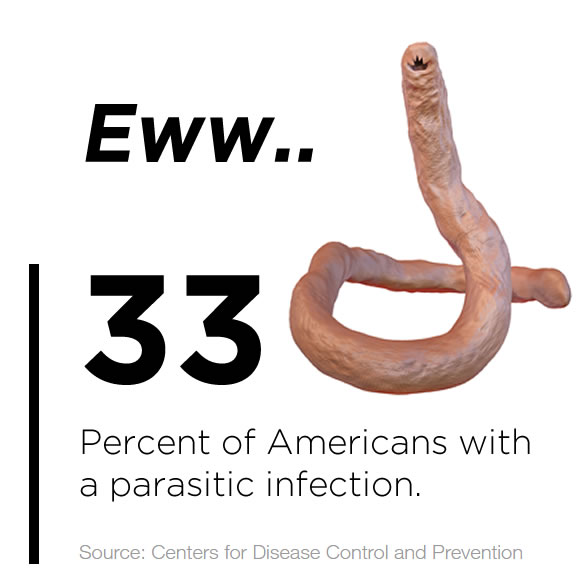
And its not hard to understand that any microorganism in our body can slowly wreck havoc, destroy
our immune system and yes, mutate your DNA.
Studies have already demonstrated that 20 to 30 percent of cancers worldwide are associated with chronic infection: The Epstein–Barr virus can cause lymphomas and nasopharyngeal cancers; the human papillomavirus (HPV) causes cervical cancer and head and neck tumors; long-term bacterial infection with Helicobacter pylori can cause stomach cancer; and hepatitis B virus (HBV) causes liver cancer. There is a good possibility that many more cancers will be associated with pathogens, and some cancer-causing pathogens may turn out to be part of our collective microbiome, the community of microorganisms that live in our bodies. The microbiome makes up about 1 to 3 percent of our biomass and outnumbers human cells in the body by 10 to 1.
If you really want to get a grasp on Parasites and their impact, check out Carl Zimmer's book Parasite Rex where he says that parasites “are expert at causing only the harm that's necessary, because evolution has taught them that pointless harm will ultimately harm themselves.”
Evolution will eventually teach malignant cells (and their masters) that the only way they will truly succeed in perpetuating themselves is by immortalizing rather than killing the host. Let us hope we will have the answer to the cancer debacle before that.
Until then… be well, eat healthy (or cleaner), exercise and don't do drugs :)

